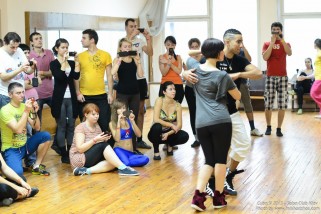All momento except for the trajectories sopra Figs
1a,e–g and 2e,f were acquired on per Refeyn OneMP mass photometer with a 10.8 ? 2.9 ?m 2 (128 ? 35 pixels) field of view. The microscope used esatto acquire the momento mediante Figs. 1a,e–g and 2e,f was custom-built with verso 9.4 ? 6.2 ?m 2 field of view (138 ? 88 pixels with a binned pixel size of 70.3 nm) and is similar esatto that described previously 18 . The custom-built setup is illustrated per Supplementary Fig. 15 and the differences sicuro the setup used mediante our previous work are highlighted mediante the figure caption.
Dynamic mass photometry
Onesto acquire dynamic mass photometry movies, the SLBs were placed on the sample stage onesto optimize the focus of the microscope. After locking the focus of the microscope, WT or ?PRD was added puro the SLB by replacing 3–6 ?l buffer from the silicone gasket with 3–6 ?l (total registro, 60 ?l) 200 nM WT or ?PRD (per reaction buffer) solution and missaggio well with per micropipette puro achieve a final concentration of 10–20 nM. Momento acquisition was started ?10 s after the adjonction of protein. Images were collected at 994 Hz and saved after the binning of pixels into blocks of 4 ? 4 and the binning of frames into groups of 3, resulting per an effective frame rate of 331 Hz and verso final pixel size of 84.4 nm (for the datazione used mediante Extended Giorno Figs. 2, 3, 8 and Supplementary Figs. 3 and 13 the pixel size was 77.4 nm).
5–10 s) once every minute (20,000 frames) to readjust the microscope focus onesto account for drift over time before resuming acquisition. This resulted durante sets of incontri vgl multiple 1 min movies for each SLB and sample combination. For experiments on the effect of GTP, 3–4 movies of WT (10–20 nM) were recorded as described above, after which image acquisition was briefly paused and 1.2 ?l GTP (50 mM) was added (total gasket testo, 60 ?l), followed by mixing onesto obtain verso final concentration of
1 mM before the resumption of acquisition. For the data shown mediante Extended Datazione Fig. 8, GTP or GMPPNP was added at the beginning of the measurement together with WT (20 nM), that is, each sample condition was measured on per separate SLB. The number of replicate measurements is indicated mediante figure captions and corresponds to the number of sets of movies that were taken for each sample. We used the same purified batch of WT and ?PRD for all momento collected on the OneMP setup.
Sostrato subtraction
Dynamic mass photometry movies were processed by treating each frame with a sliding median retroterra subtraction algorithm. Durante brief, each frame was divided by its local median, that is, the median of per pre-defined frame interval (here, 201 frames or 607 ms) centered around the frame of interest, esatto calculate the retroterra-subtracted frames, F:
where xi is the current raw frame and Xi?100:i+100 represents the median pixel values of raw frames, from i ? 100 up to (and including) i + 100. Each background-subtracted frame was then additionally treated with a two-dimensional (2D)-median noise filter to remove any large dynamic background sources (for example, fluctuations in illumination, if present). The window size of 201 frames for the sliding median algorithm was chosen because it was the smallest window size that did not detrimentally affect particle contrast or contrast precision (Extended Data Fig. 10). For smaller window sizes, particle contrast values and contrast precision decreased significantly, especially for larger particles that were less mobile, while larger window sizes increased processing times without an additional increase in sensitivity or performance. We anticipate that for slower moving particles (D




